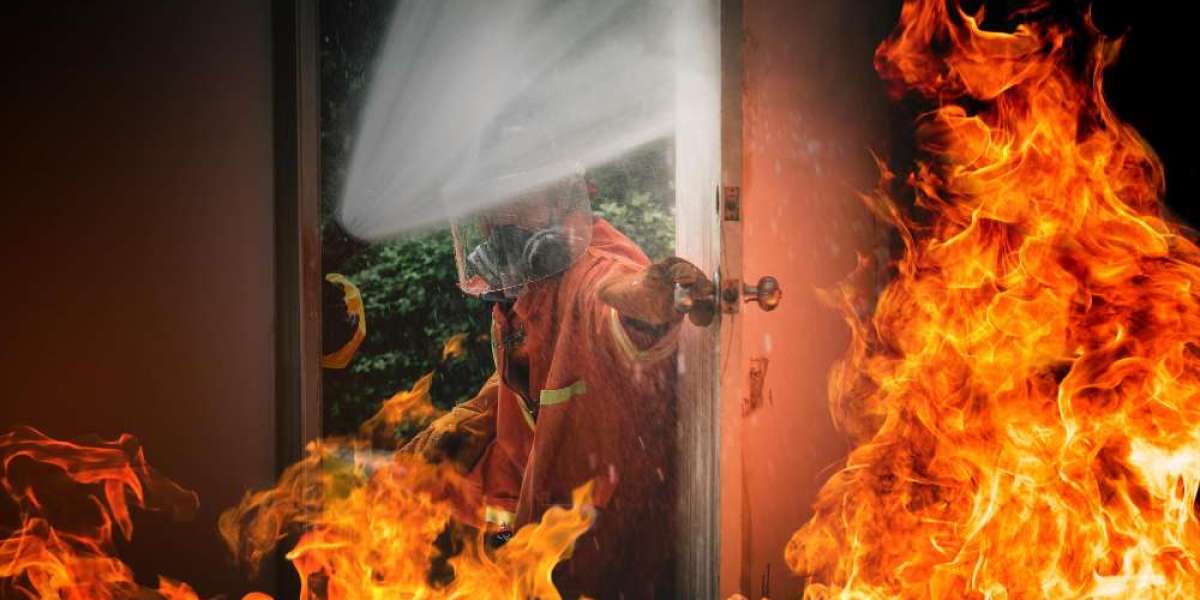Introduction:
Fire, an ever-looming threat, can strike at any moment, leaving devastation in its wake. The importance of fire safety cannot be overstated at home, in the workplace, or in public spaces. Among the arsenal of tools to combat fires, the fire extinguisher stands as a frontline defense, ready to mitigate disaster and protect lives and property. In this guide, we delve into the essential aspects of fire extinguishers, understanding their types, uses, and maintenance, to empower you with the knowledge needed to navigate fire emergencies effectively.
Understanding Fire Extinguishers:
The fire extinguisher is portable device designed to extinguish or control small fires, often in emergencies. They operate by expelling a fire-suppressing substance, such as water, foam, dry chemical, carbon dioxide, or halon, onto the fire, thereby depriving it of one or more elements essential for combustion, such as oxygen, heat, or fuel.
Types of Fire Extinguishers:
Fire extinguishers are classified into different types based on the classes of fires they are designed to combat. The classifications commonly follow the standards set by organizations like the National Fire Protection Association (NFPA) or the Occupational Safety and Health Administration (OSHA). Here are the primary types:
- Class A: Suitable for fires involving ordinary combustible materials like wood, paper, cloth, and plastics.
- Class B: Effective against flammable liquids such as gasoline, oil, grease, and solvents.
- Class C: Designed for fires involving energized electrical equipment, like appliances, wiring, circuit breakers, and outlets.
- Class D: Intended for fires fueled by combustible metals like magnesium, sodium, potassium, and titanium.
- Class K: Specifically formulated for fires involving cooking oils, fats, and grease commonly found in kitchens.
Selecting the appropriate type of fire extinguisher is crucial for effectively combating specific types of fires while minimizing the risk of exacerbating the situation.
Using a Fire Extinguisher: Proper operation of a fire extinguisher follows the PASS technique:
- Pull the pin: This removes the safety clip and allows you to discharge the extinguisher.
- Aim low: Point the extinguisher's nozzle or hose at the fire's base to target the flames' source.
- Squeeze the lever: This releases the extinguishing agent. Maintain a firm grip on the extinguisher while doing so.
- Sweep from side to side: Use a sweeping motion to cover the entire area of the fire until it is extinguished.
Remember, safety should always come first. Only attempt to extinguish a fire if it is safe to do so, and always prioritize evacuation and alerting emergency services if the fire is beyond your control.
Maintaining Fire Extinguishers:
Regular maintenance and inspection are essential to ensure the reliability and effectiveness of fire extinguishers. Some key maintenance tasks include:
- Monthly visual inspections to check for damage, blockages, or pressure loss.
- Annual professional inspections and servicing to verify the integrity of the extinguisher and recharge if necessary.
- Proper storage in accessible locations with clear signage and instructions.
Additionally, employees and residents should receive training on fire extinguisher use and safety protocols to ensure they can respond swiftly and effectively in case of a fire emergency.
Conclusion:
Fire extinguisher represent a critical line of defense against the ravages of fire, offering a means to suppress small fires before they escalate into catastrophic events. Understanding the types, usage techniques, and maintenance requirements of fire extinguishers is paramount for ensuring individuals' safety and property protection. By equipping ourselves with this knowledge and promoting a culture of fire safety, we can mitigate the risks posed by fires and safeguard our communities against potential disasters.








